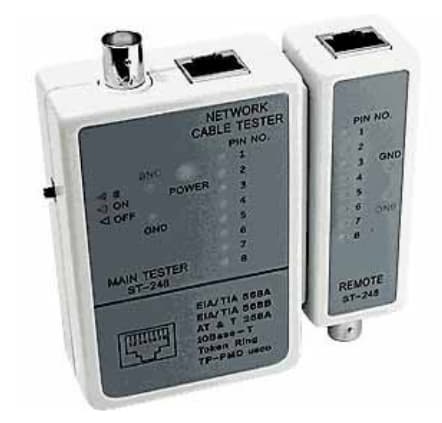From Wikipedia
A. Cable Tester- A cable tester is an electronic device used to verify the electrical connections in a cable or other wired assembly. Generally, a cable tester consists of:
1. A source of electric current
2. A volt meter
3. A switching matrix used to connect the current source and the volt meter to all of the contact points in a cable.
There are two common ways to test a connection:
1. A continuity test. Current is passed down the connection. If there is current the connection is assumed to be good. This type of test can be done with a series combination of a battery (to provide the current) and a light bulb (that lights when there is a current).
2. A resistance test. A known current is passed down the connection and the voltage that develops is measured. From the voltage and current, the resistance of the connection can be calculated and compared to the expected value.
There are two common ways to test for a short:
1. A low voltage test. A low power, low voltage source is connected between two conductors that should not be connected and the amount of current is measured. If there is no current the conductors are assumed to be well isolated.
2. A high voltage test. Again a voltage source is connected but this time the voltage is of several hundred volts. The increased voltage will make the test more likely to find connections that are nearly shorted since the higher voltage will cause the insulation of nearly shorted wires to break down.

Want more information on how to become CompTIA Network+ Certified? Learn more!
Also published on Medium.







